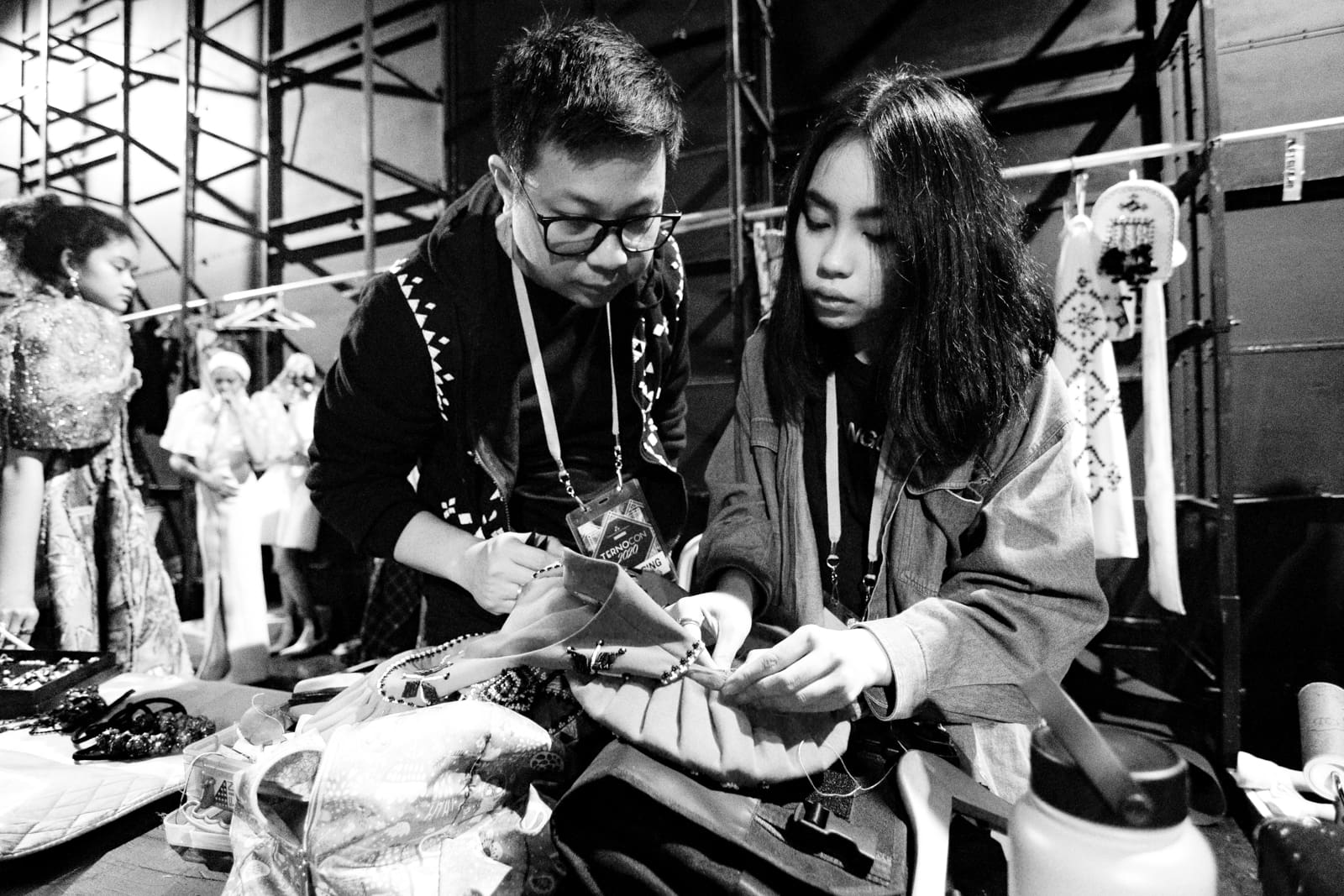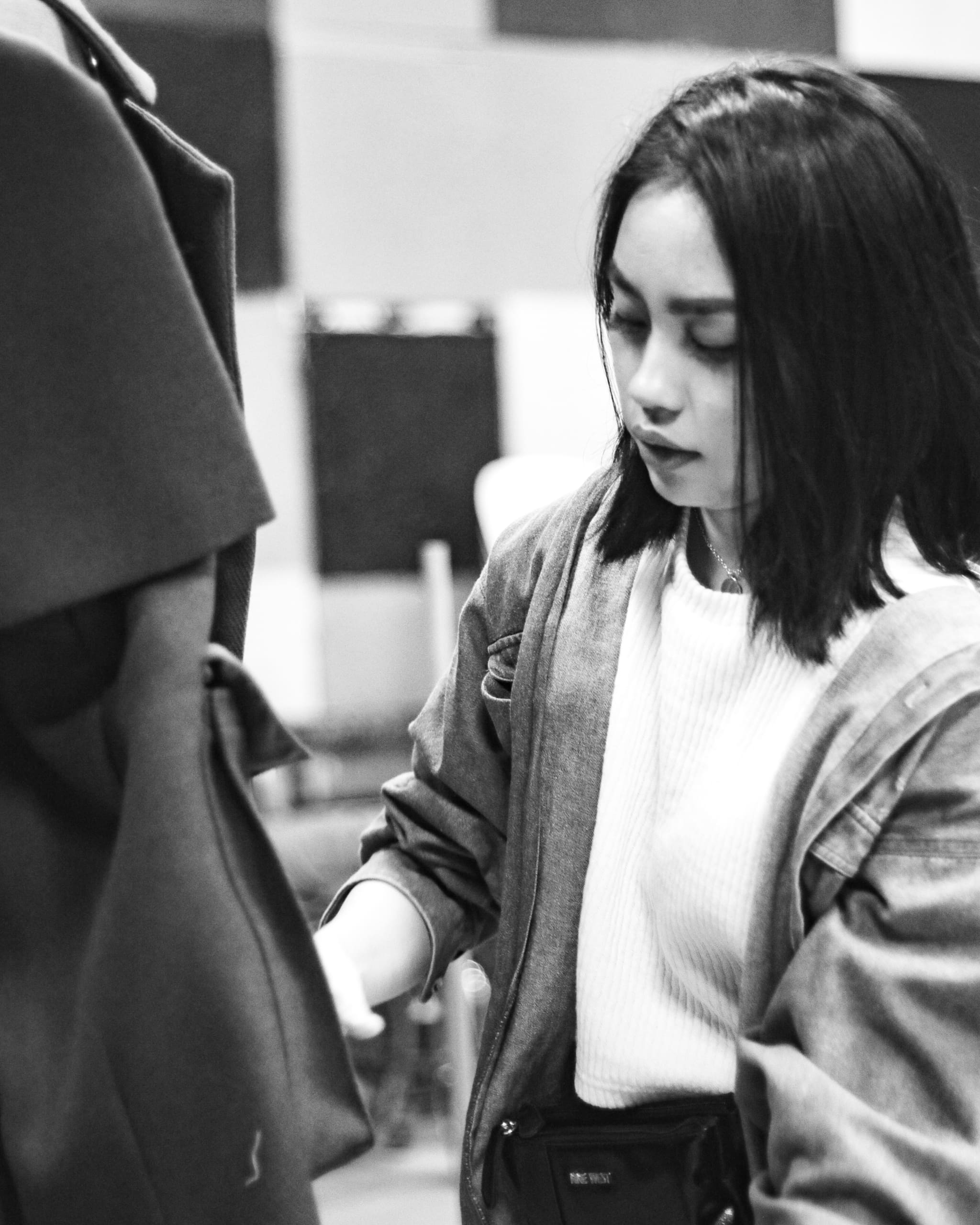Kim Montes
All the curious silhouettes that Hannah Adrias has created since she debuted as a fashion designer stems from asking “why” and “why not.”
In 2020, Hannah bested 12 other contestants at the second installation of TernoCon, a convention and competition about the art of sewing the traditional Filipino garment that is identified by pleated butterfly sleeves. She unveiled a high-contrast utilitarian collection: oversized silk cocoon terno shirt with embellished epaulets, corseted jumpsuits, and hand-woven skirts from beads and straps.
Adrias that she learned from her TernoCon mentor Lesley Mobo. “He asked me, ‘Who’s wearing this?’ It gets me thinking every time I make a garment now. The person wearing it comes first in the designing process,” she tells Vogue Philippines. “I should always consider what the wearer will feel and if my creation will complement them. It will literally change the whole vibe if the person carries the dress well, not the other way around.”

The 27-year-old from Pasay started designing when she was in fashion school. “I didn’t have any background in drawing or fashion at all,” she admits. “I actually didn’t apply for any schools after high school, so I had no choice but to find one that did not have an entrance exam. So I searched and found Slim’s [Fashion and Art School]. Not knowing what to do [at] that moment led me to my dream job now.”
Hannah first enrolled at Slim’s in 2013 where she completed courses in fashion design, dressmaking, draping, and bespoke tailoring for five years. She began taking in clients in 2017, but it was only after the competition that she saw more business come in after winning.
“I received more inquiries online, clients who are based abroad who wanted my ternos. It was overwhelming,” she shares. “But it was also the year when the pandemic started; it was hard for me because I just won but then—boom—lockdown happened. Many projects were moved and canceled.”
As Hannah welcomes back her patrons today, there has been recent progress, driven by her evolving attitude toward consciously crafted clothes. Aside from that, she wants her customers to feel good about representing our culture.
“The value of our Philippine national dress is the greatest inspiration. Young people now don’t even know what it’s called,” she says. “They don’t wear or own one. The only time they wear it is because there was a play or a pageant at school.
Her goal is to have people wear ternos just like how Filipinas did before. “I now make ternos that can be worn casually like jackets and tops that can be paired with pants and skirts,” she says about her new line of ready-to-wear terno blouses and cover-ups, which is available in her Instagram account.
Pared-back and easy clothes dominate at her design house now: modernized Filipiniana cuts made of distressed denim and tailored paper bag pants seen on women of all ages. Her newly-released scalloped lace bralette terno top styled with a neatly chipped gauze neck scarf (alampay) and low-waist, wide-legged trousers point to a recent interest in fabric manipulation.
“Filipinos now are veering away from tradition in terms of fashion, and I know Filipino designers are striving hard to maintain our connection from our past by innovating and adding new takes on it,” Hannah adds. “I usually base on what I feel and what I see around me. Some pieces I made last year were inspired by me being ‘socially aware’ in what’s happening around.”


